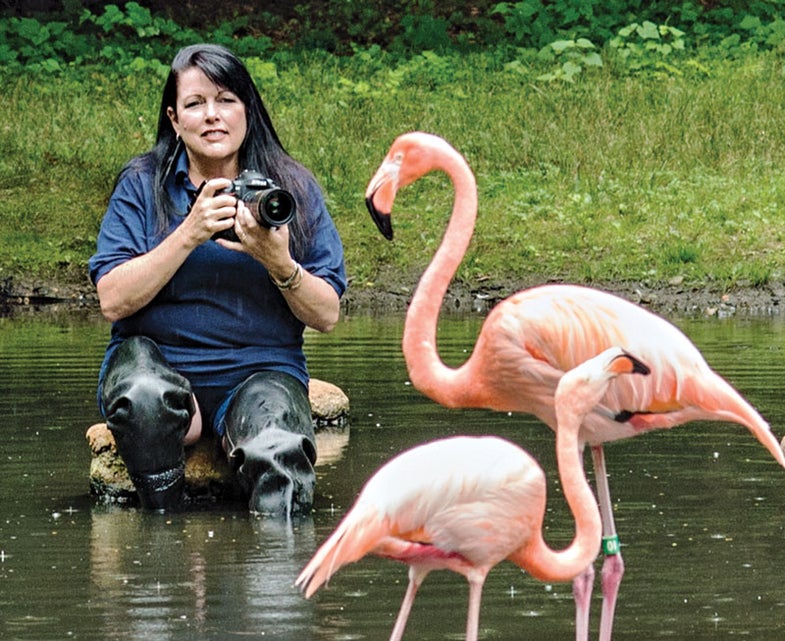I, Photographer: Zoo Keeper
Julie Larsen-Maher is a staff photographer for the Wildlife Conservation Society

How did you get this cool job?
I’ve been with the Wildlife Conservation Society for 20 years. I started as the art and design director and worked with the staff photographer. When he retired, I got his job. There have been only six people in this position in 116 years, and I’m the first woman.
What’s your typical day?
No two days are alike, but typically I’m at the Bronx Zoo, photographing the animals—especially if there are newborns. That can be a quick shoot, or a lot of sitting and waiting for the right opportunity. Then I might have shoots that involve people, either visitors or events, and in the evening a fundraiser at the Central Park Zoo.
And in the field?
I travel to pretty remote locations with a field conservationist. I document every aspect of how we are working towards conservation of either a wild place or wildlife. For example, in Zambia, where people were killing elephants to make money from the ivory, the WCS worked with them on an alternative livelihood program that involved bee-keeping and farming, and they turned over their guns and snares.
What’s easier, the zoo or the wild?
The zoo is easier in that the animals are right there; the problems are the parts of the enclosures, like glass or fencing, that you have to get out of the photo. In the field, sometimes it takes a long time just to find the animal. In Ecuador, the area was so heavily poached that we went several days without seeing any.
Any tips for the zoo?
Treat it like any photo assignment and plan in advance. Spend more than one day there—pick one area to spend the whole day in and one subject to photograph—but be prepared to change your plan according to where the best light is. Pay attention to feeding times, which are often posted online, because the animals are alert and wait for the staff to come. Shooting through glass is a big challenge—stand at an angle to reduce both the reflection and the appearance of the glass. If the animal is back about 10 feet, use a wide-open aperture to shoot though a fence so it disappears.
How you like to portray animals?
Often the assignment will include what type of shot the WCS is looking for. If it’s a new or newborn animal, I’m usually assigned to just get what I can, but sometimes I go back a second or third time to watch their behavior, because each time something different will happen. There are a lot of moments I have to be prepared to get, like mother and baby interaction.
What gear do you use most?
A Nikon D3. I have 24–70mm and 70–200mm f/2.8G Nikkors, and an 80–400mm f/4.5–5.6 in my everyday kit, and I use Vibration Reduction, which helps when I’m riding in bumpy vehicles or when an animal is in motion. I use a monopod in the zoos since tripods aren’t allowed. I have a Nikon Close-up Speedlight Commander Kit R1C1 that works well for insects and frogs—it’s like a mini studio and allows me to get really close with a 50mm macro.
What’s your favorite subject to shoot?
I haven’t met an animal I didn’t like, and I try not to have a favorite. Whether it’s a snake or a baby monkey, there is something unique about each animal.
Julie Larson-Maher’s job as a staff photographer for the Wildlife Conservation Society takes her far beyond the animals at the Bronx Zoo and other New York City zoos to capturing conser-vation efforts all over the globe. See more of her photos at www.julielarsenmaher.com.